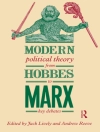The radical who becomes a conservative is a common theme in political history. Benito Mussolini, the Italian socialist who became a fascist, is the best-known example, but there have been many others, including the numerous American Trotskyists and Marxists who later became neo-conservatives, anti-communists or, in some instances, Mc Carthyists.
The politics of betrayal examines why several one-time radicals subsequently became part of the establishment in various countries, including the former Black Panther Party leader turned Republican Eldridge Cleaver, the Australian communist Adela Pankhurst who became an admirer of the Nazis, and the ex-radical journalist Christopher Hitchens, whose defection to the neo-conservative camp of George W. Bush’s administration following 11 September 2001 offers one of the most surprising instances of the phenomenon in recent times.
How and why do so many radicals betray the cause? What implications does it have for left politics? Were the ex-radicals right to become conservatives? This book, the first of its kind, answers these and more questions.
表中的内容
Introduction: a road well travelled
From radical to renegade
Structure and argument of the book
A note on terms and sources
Part I: Worlds turned upside down
Introduction to part I
1. Turncoats and collaborationists: early twentieth century renegades
The New York intellectuals and the anti-Stalinist left
2. ‘Turn on, tune in, drop out’…drop back in: ‘60s ex-radicals
Twenty-first century fox: Christopher Hitchens
Conclusion to part I
Part II: The experience of defeat
Introduction to part II
3. WWI: a defeat borne of nationalist bloodshed
Mother of all defeats: the tragedy of the Russian revolution and the rise of Stalinism
The post-war political and economic contexts
4. 1960s radicals and political defeat: a lost cause?
Christopher Hitchens: defeat post-poned?
5. The full force of the law: defeat by state repression?
State repression in the 1960s and 1970s
Conclusion to part II
Part III: Flawed radicals
Introduction to part III
6. Flawed early twentieth century radicals: Mussolini, Parvus, and co.
‘The god that failed’, and other disillusionments
7. Overstated radicals
Flawed ‘60s radicals: gulags, radical stuntmen, and other maladies
Left Thatcherite: the flawed radicalism of Christopher Hitchens
8. For thirty pieces of silver?
Mussolini: mercenary for imperialism
Parvus, the ‘Marxist millionaire’
The New York intellectuals: cold warriors for cash?
From Yippie to Yuppie: Jerry Rubin and other ‘60s sell-outs
Christopher Hitchens: Oedipal child returns to the establishment?
Conclusion to part III
Part IV: The renegade ‘mentality’
Introduction to part IV
9. Psychohistory
Marxism, structuralism, and psychohistory
The mentality of early twentieth century renegades: Mussolini, Parvus and others
Adventurers to the end? Pankhurst Walsh, Stephensen, and Mosley
10. Arthur Koestler, the twentieth century ‘sceptic’, and other cold war pilgrims
From radicalism to fadism: Rubin, Cleaver and fellow ‘60s searchers
‘Hypocritchens’
Conclusion to part IV
Conclusion
References
关于作者
Ashley Lavelle is Lecturer in Politics and International Relations at Macquarie University, Sydney












